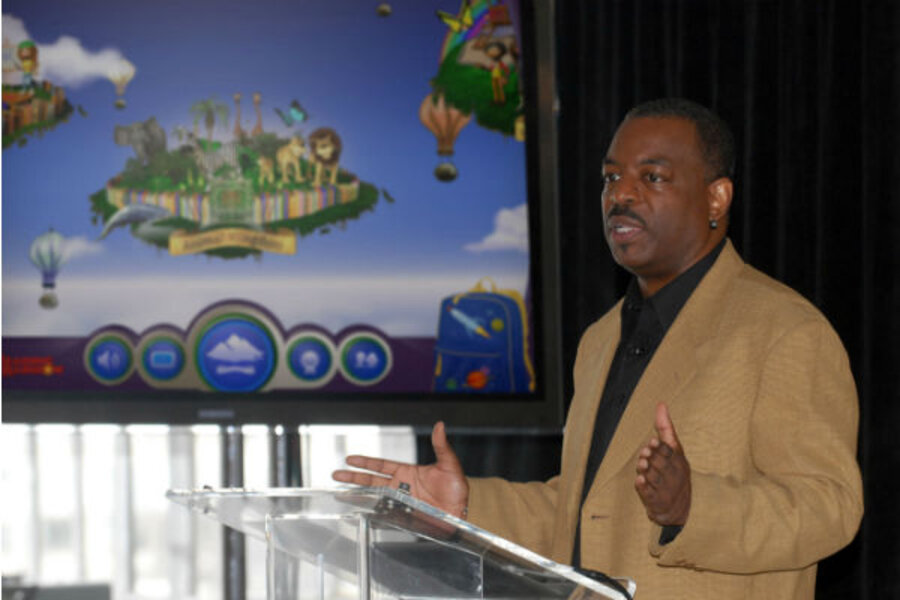'Reading Rainbow' crowdfunding campaign already a success
Loading...
On Wednesday actor LeVar Burton, host of the PBS hit show ‘Reading Rainbow,’ which originally ran for 26 years, started a Kickstarter campaign to revive the show for online audiences.
According to Mr. Burton’s Kickstarter video, his aim was to raise a million dollars to “develop a web-enabled ‘Reading Rainbow’ for the home, create a classroom version with the tools our teachers need, and subsidize cost so that the schools most in need can use Reading Rainbow FOR FREE.”
Less than 24 hours later, the project was fully funded. At last count, the campaign has raised, $1, 691,652 with 34 days to go.
As soon as I saw news of the project online, I got really excited to support bringing “Reading Rainbow” to the next generation of readers. The catchy theme song started playing in my head right away after reading the news, “Take a look, it’s in a book, it’s Reading Rainbow ...”
The campaign is not without criticism – especially because the Reading Rainbow program app, available by subscription, will only be accessible by computer or tablet with internet capability, to which many poor families and school districts do not have access. The app won’t be accessible by web browser on a cellphone.
Unlike its roots in non-profit public broadcasting, Burton has turned the “Reading Rainbow” franchise into a for-profit company, which some donors to Kickstarter may not immediately understand.
Plus, some assert that the show – as it was originally designed – fosters a love for reading, and doesn’t teach literacy directly. This is cause for concern from those who wonder if it’s too big of a leap for today’s kids, who have a greater need for basic literacy skills.
I am still hopeful, however, and I feel that once you gets kids excited about reading, they will be interested in learning how to do so. Burton has inspired a generation of readers, and I think his eagerness, even with a price tag, could inspire a new generation of kids as well.
What drew me in as a young reader was Burton’s engaging style that doesn’t talk down to kids. His style of encouraging reading through making jokes, taking viewers on tours to interesting places, and talking to all kinds of creative people is what helped the original series enjoy more than 25 years on air.
I remember taking huge stacks of books – as many as I could carry – home from the library every other week, and no doubt Burton’s program influenced my love of reading.
This literary interest has continued throughout my life, and I can’t imagine my life without the enrichment reading provides.
I’m already looking for ways to encourage an interest in reading in my 14-month-old daughter. I haven’t found any TV shows that are similar to “Reading Rainbow.” The only shows she watches are “Sesame Street” and the Spanish program “Pocoyo.” They're fun, but they don't compare to the educational value of Reading Rainbow.
Anytime my hands are free and my daughter hands me a book, I sit down to read with her. She already has a formidable collection of books to enjoy every day. I’m working on teaching her to be patient enough to sit still long enough to hear a whole book. Even if she does get antsy and want to move around, I always finish reading the book to her, setting the example.
Since she was about 10-months-old, she has “read” her books by taking one off the bottom shelf of a bookshelf, opening it up (often upside-down), turning the pages, and “talking” (speaking gibberish) while pointing to the pictures. This imitation of reading makes me so happy to see – it shows that she understands the process of reading, even though she hasn’t learned the mechanics yet. It’s a step in the right direction.
At this point, I am more excited as a first-generation “Reading Rainbow” fan than my daughter is to see the show return. And judging by its current influx in funding, I’m sure other parents feel the same way.
"But you don't have to take my word for it ..."
[Editor's note: Mr. Burton's name was misspelled in the summary of the original version of this story.]








